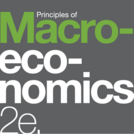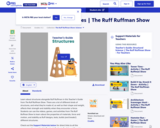
In Unit 1, students read chapters of the text Patient Zero and explore two related questions that thread through the entire module. One question relates to the people who have sought to understand and manage epidemics: the scientists, curious individuals, and epidemiologists whom we refer to as “epidemic detectives.” What were these people’s mindsets and contributions, and how did they behave differently from those around them? The other question relates to what an epidemic is, in general, and what a medical or biological epidemic is, in particular. What characteristics did the large-scale disease outbreaks that we refer to as epidemics have in common, and how do they spread? Exploring these foundational questions about epidemics and the people who “fought” them provides the conceptual scaffolding and some of the terminology necessary for extending the study of medical epidemics to social epidemics in Unit 2.
Students will read three chapters from the anchor text, Patient Zero, examining examples of epidemics in the 17th century to the early 20th century. In the first half of the unit, students examine the wide variety of text features and structures incorporated in each chapter of Patient Zero, as well as how major sections contribute to the whole text and the development of ideas. Students will practice determining the meanings of words and phrases, especially technical terms associated with epidemiology. In the second half of the unit, students focus more on the interactions among the individual epidemiologists or scientists, the events during the epidemics, and the ideas about disease at the time, as well as consider the mindsets, tools, and character traits that enabled the scientists to solve these medical mysteries. Students also practice determining the impact of word choice on meaning and tone.
Please note that students do not read about the COVID-19 pandemic in this unit; however, there are references to this pandemic in some of the chapters in Patient Zero. Students are given opportunities to share and discuss their experiences of epidemics.
Patient Zero contains references to sensitive topics such as disease and death as well as the conditions that contribute to disease. These issues must be carefully and sensitively discussed, particularly when making connections to the COVID-19 pandemic, to give students context as they read the story. Consider speaking with students and families in advance, especially those who may have sensitivity to topics discussed.
In this unit, students begin to read nonfiction texts at their level as they choose independent research reading texts. There are Independent Reading Sample Plans (see the Tools page: http://eled.org/tools) with ideas on how to launch independent reading. Students should complete 20 minutes of independent research reading for homework when they are not reading a chapter from the anchor text. Students should also continue independent research reading over weekends.
- Subject:
- English Language Arts
- Material Type:
- Unit of Study
- Provider:
- EL Education
- Date Added:
- 05/17/2024










